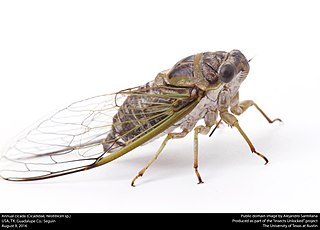
Cicadidae, the true cicadas, is one of two families of cicadas, containing almost all living cicada species with more than 3,200 species worldwide.

The Tettigarctidae, known as the hairy cicadas, are a small relict family of primitive cicadas. Along with more than 20 extinct genera, Tettigarctidae contains a single extant genus, Tettigarcta, with two extant species, one from southern Australia and one from the island of Tasmania. Numerous fossil species have been described from the Late Triassic onwards. Tettigarcta are the closest living relatives of the true cicadas.

The Cicadinae are a subfamily of cicadas, containing the translucent cicadas. They are robust cicadas and many have gaudy colors, but they generally lack the butterfly-like opaque wing markings found in many species of the related Tibiceninae.
Tibiceninae is a former subfamily name from the insect family Cicadidae. It was first used by Distant (1889). As of 2021, the name became unavailable to zoological nomenclature due to the suppression of its type genus Tibicen Berthold, 1827 by the International Commission on Zoological Nomenclature. Cicada genera grouped at the subfamily level with genus Lyristes are generally referenced under the name Cicadinae Latreille, 1802.

Cryptotympanini is a tribe of cicadas in the family Cicadidae. They are found in the Nearctic, Palearctic, Indomalaya, Oceania, and Afrotropics.
Tibicenini is a former tribe name from the insect family Cicadidae, based on the family group taxon established by Distant (1889). As of 2021, the name became unavailable to zoological nomenclature due to the suppression of its type genus Tibicen Berthold, 1827 by the International Commission on Zoological Nomenclature. Cicada genera grouped at the tribe level with genus Lyristes are generally referenced under the name Cryptotympanini Handlirsch, 1925.

Cicadetta is a genus of generally small-bodied annual cicadas widespread across portions of the Palearctic, Indomalayan, and Afrotropical realms. In older scientific and taxonomic literature, this genus was popularly referred to as Melampsalta. These cicadas occur in a diverse spectrum of habitats, although most taxa are typically associated with weedy meadows and tallgrass prairie ecosystems. Several related species from North America were recently transferred to the genus Cicadettana.

Megapomponia is a genus of cicadas from Southeast Asia containing the world's largest cicadas species. It now belongs to the subtribe Megapomponiina and was erected by Michel Boulard to accommodate the world's largest cicada species, Megapomponia imperatoria, the type species of Megapomponia. Boulard included seven species in Megapomponia. Lee and Sanborn, however, re-transferred two species to Pomponia, Pomponia decem and Pomponia rajah.

The Dundubiini are a tribe of cicadas in the family Cicadidae, found in the Palearctic, Indomalaya, Australasia, and the Western Pacific. There are at least 180 described species in Dundubiini.
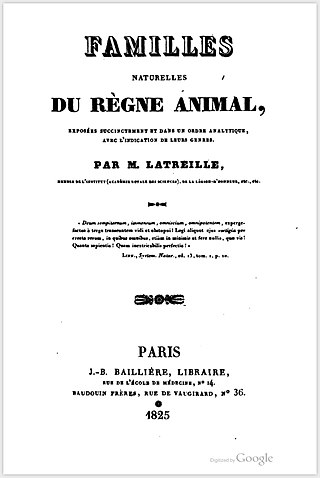
Tibicen is a former genus name in the insect family Cicadidae that was originally published by P. A. Latreille in 1825 and formally made available in a translation by A. A. Berthold in 1827. The name was placed on the Official Index of Rejected and Invalid Generic Names in Zoology by the International Commission on Zoological Nomenclature in 2021. Certain European cicada species that were included by some authors in this genus at the time of its suppression are now listed under genus Lyristes Horváth, 1926. Other formerly-Tibicen species are placed in the tribe Cryptotympanini and include the genera Auritibicen Lee, 2015, Hadoa Moulds, 2015 Megatibicen Sanborn and Heath, 2016, and Neotibicen Hill and Moulds, 2015.
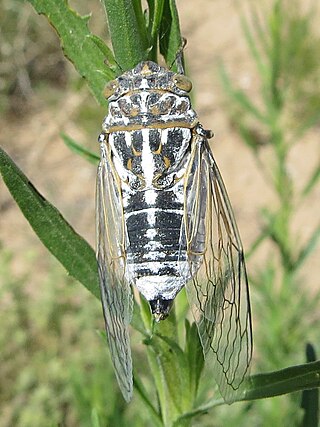
The genus Hadoa comprises large-bodied Cicadidae occurring in Western North America. Until recently, these species were in the genus Tibicen, which has now been redefined so as to include only a few European species, while most species from the Eastern and Central US are now placed in Neotibicen and Megatibicen.

Tibicina haematodes is a species of cicadas belonging to the family Cicadidae, subfamily Tibicininae.

Cicadettinae is a subfamily of cicadas in the family Cicadidae. About 230 genera and 1,200 described species are placed in the Cicadettinae.
Orapa is a genus of cicadas in the family Cicadidae, found in tropical Africa. About five described species are in Orapa. Orapa is the only genus of the tribe Orapini.
Plautilla is a genus of cicadas in the family Cicadidae, found in the Neotropics. There are at least three described species in Plautilla.

Tettigomyiinae is a subfamily of cicadas in the family Cicadidae, found in tropical Africa. There are about 16 genera and at least 100 described species in Tettigomyiinae.
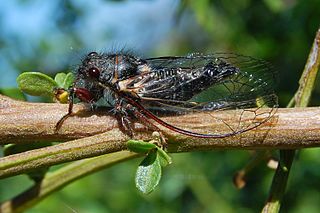
Tibicininae is a subfamily of cicadas in the family Cicadidae. There are 5 tribes and at least 140 described species in Tibicininae. They are found in the Neotropics, the Nearctic, and the Palearctic.
Pagiphora is a genus of cicadas in the family Cicadidae, found in the western Palearctic. There are about five described species in Pagiphora.
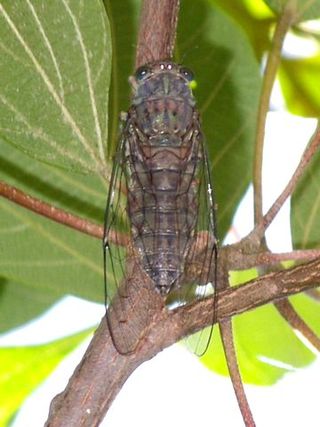
Leptopsaltriini is a tribe of cicadas in the family Cicadidae. There are at least 200 described species in Leptopsaltriini, found in the Palearctic, Nearctic, and Indomalaya.

Dundubia is a genus of cicadas in the subfamily Cicadinae and the type genus of the tribe Dundubiini.















